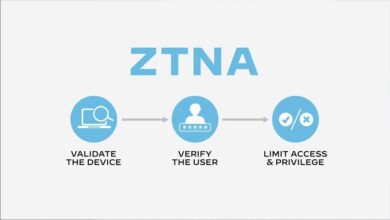The Benefits of Using Single SIM Technology in IoT Devices

Using SIMs in IoT devices means you can easily connect your equipment to different network providers worldwide. This can benefit companies that use many machines in various locations worldwide. Unlike traditional SIMs, IoT SIMs are designed for tougher environments, including extreme temperatures, humidity, and vibration. They also have more memory and a longer lifespan than their consumer counterparts.
Increased Data Capabilities
One of the most significant benefits of using experts like MetTel single SIM technology in IoT devices is increased data capabilities. Because IoT deployments collect, control, and process varying amounts of data, consumer-based data plans don’t typically offer adequate data capacity for these deployments. To overcome this challenge, Single SIM devices allow for aggregated data packages. This feature makes setting a maximum data cap on an IoT project easier and reduces cost by eliminating the need for multiple individual cellular SIM cards.
Another benefit of utilizing Single SIM technology is that it allows for greater flexibility in cellular network deployments. Many traditional cellular IoT devices require physical SIM cards that must be swapped for new ones when a device is moved to a different location. This can lead to bottlenecks in industries that rely on consistent network coverage. However, new eSIM technology allows for non-removable chip-based SIM cards that download carrier profiles from the cloud.
This enables an IoT device to connect to multiple cellular networks and switch carriers without manual intervention or expense. This means businesses can use the same SIM card across several countries and regions, especially useful for global deployments. The eSIM also improves the user experience of connecting IoT devices by removing the need for remote provisioning. In the past, it was only possible to change mobile network providers with a costly and labor-intensive manual process that required swapping physical SIMs.
With eSIM, an IoT device can update its carrier profile from a remote server, allowing it to use multiple cellular networks worldwide without manual management or maintenance. This enables IoT devices to access network coverage and increase data capacity as cellular carriers reallocate 2G and 3G bandwidth to 4G and 5G networks.
Aside from improving the user experience, eSIM technology can also help to enhance a company’s bottom line. For example, it can track products and automate processes throughout the production cycle, reducing the number of human workers needed to monitor a factory. This saves time, money, and labor while ensuring the company meets its objectives.
Reduced Cost
IoT device users benefit from connecting to multiple networks without purchasing or installing new SIM cards. This means they can save money on network subscriptions and pay-as-you-go data, which can be particularly appealing for businesses that operate large fleets of devices. Another significant advantage of Single SIM technology is that it makes managing cellular subscriptions for devices easier. IoT product creators can focus on building the best products rather than dealing with activation and deactivation management.
eSIMs also enable remote profile management, which does away with technical and carrier lock-ins that can come with traditional SIMs. This means that device users don’t need to buy or install a different SIM card when switching from one cellular network to another, which can significantly reduce the cost of managing connectivity for IoT devices deployed across the globe.
Finally, eSIM technology also supports the secure, remote provisioning of subscription profiles. This allows end users and IoT service providers to order a batch of subscriptions from a Communications Service Provider (CSP) and instruct their devices to download those profiles, allowing them to connect to various networks worldwide.
These benefits are especially significant for low-power devices with many cellular IoT cases. Using eSIMs in these devices can mean they don’t have to be reprogrammed or installed when changing a network. They can be updated remotely over the air as cellular networks change their technology, which can significantly improve battery life and reduce the overall costs of a connected device.
Increased Security
Whether you’re a service provider, operator, or end user, the security of connected devices is often a significant concern. A key benefit of Single SIM technology is that it can be embedded directly into a device, which makes it hard for hackers to remove or steal the hardware from an IoT application. Additionally, it can be encrypted and paired with public critical infrastructure (PKI) certificates to keep information safe.
Global Reach
One of the most significant advantages of using Single SIM technology in IoT devices is that it allows users to connect their devices to global cellular networks. This is especially helpful for industries that operate in different parts of the world and need to connect their devices across large geographical territories. This is especially true in the manufacturing sector, where factories and production facilities operate in many countries worldwide. They need to be able to connect their machines and sensors to the Internet of Things.
These industrial devices need to be able to connect to different cellular networks when they travel, and they need to do so cost-effectively.



